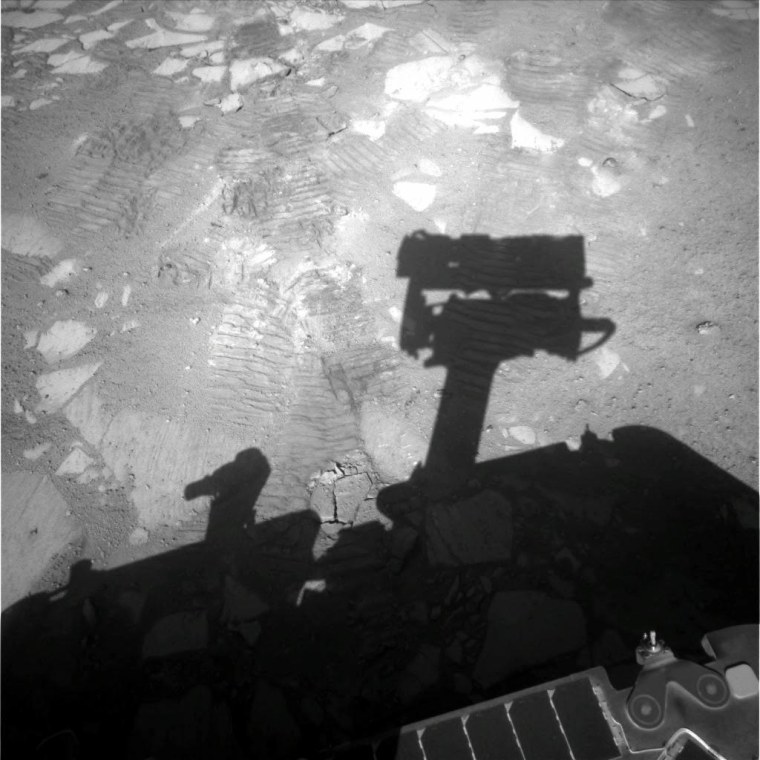NASA's Opportunity rover is slowly but surely hauling itself out of a vast Martian crater after nearly a year plumbing the interior for secrets of the Red Planet's ancient past.
Opportunity will take the same route it used to enter Victoria Crater on Sept. 11, 2007, after a year of scouting from the rim. Engineers want the rover to make a graceful exit after seeing an electric current spike in its left front wheel — a reminder of a similar spike that occurred when its robotic twin Spirit lost use of a front right wheel in 2006.
"If Opportunity were driving with only five wheels, like Spirit, it probably would never get out of Victoria Crater," said Bill Nelson, a rover mission manager at NASA's Jet Propulsion Laboratory in Pasadena, Calif. "We also know from experience with Spirit that if Opportunity were to lose the use of a wheel after it is out on the level ground, mobility should not be a problem."
The rover drove close to the base of a cliff that makes up part of the crater rim, called "Cape Verde," and snapped detailed images of rock layers reaching 20 feet (6 meters) tall.
Opportunity's samples of the layers inside Victoria Crater suggest that the wind-blown sediments later met the influence of groundwater sometime in the ancient past. The crater itself stretches half a mile (800 meters) in diameter and is deeper than any previously seen by the rover.
"The patterns broadly resemble what we saw at the smaller craters Opportunity explored earlier," said longtime rover science team planner Scott McLennan of the State University of New York, Stony Brook. "By looking deeper into the layering, we are looking farther back in time."
Neither Opportunity nor Spirit has escaped the ravages of time and exposure, despite working far beyond the intended 90-day lifespan. Opportunity currently drives with its robotic arm out of its stowed position, in case a worn shoulder motor stops working and keeps the arm locked.
Opportunity is now gearing up to check on some fist-size and larger rocks that scattered across the Martian plains after huge objects blasted craters deeper than Victoria in the surface.

"We've done everything we entered Victoria Crater to do and more," said Bruce Banerdt, project scientist for the rovers at JPL.
Spirit has also awakened from its winter hibernation on Mars, but will not move from its current haven until the available solar energy increases further. That rover continues to work on its masterpiece, full-circle color panorama while facing the sun from the north edge of the "Home Plate" plateau.
Spirit will eventually head south of Home Plate to examine some bright, silica-rich soil that it discovered last year — possible evidence of the effects of hot water.
The rovers landed on Mars in January 2004.
